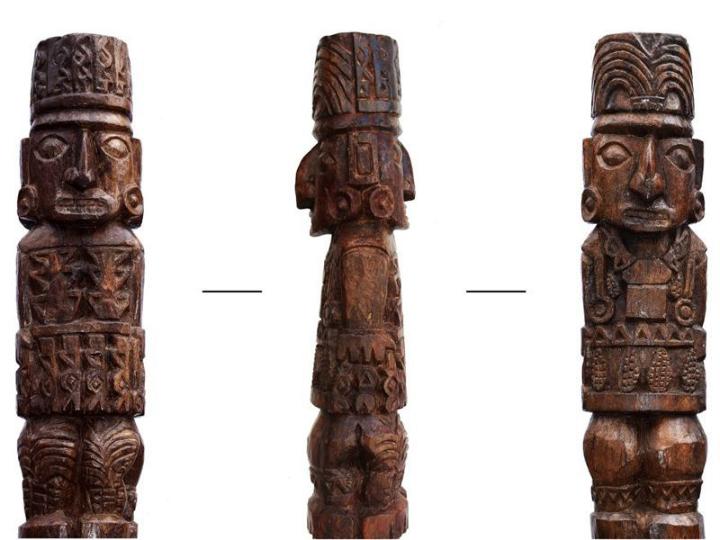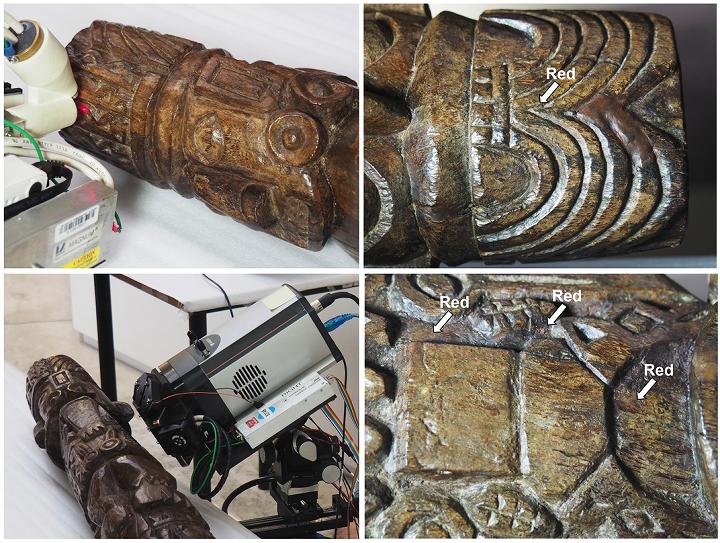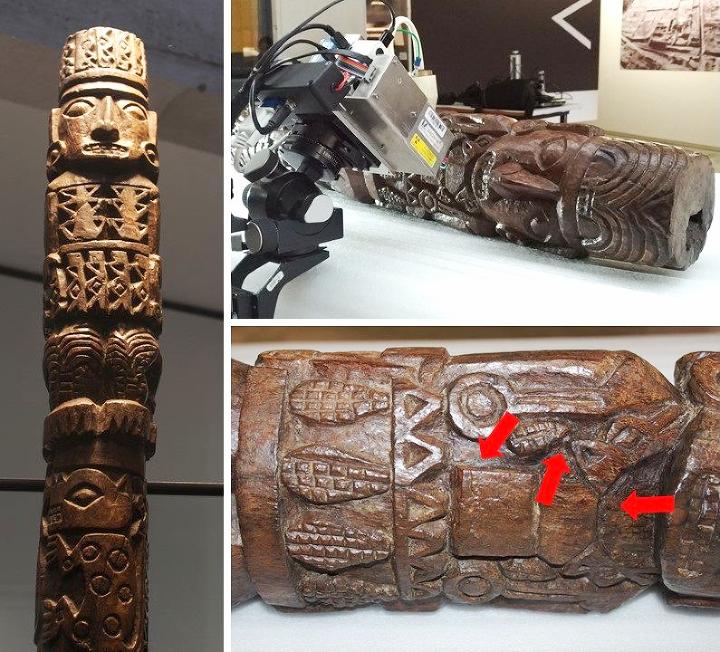 |
Canku Ota
|
 |
|
(Many Paths)
|
||
|
An Online Newsletter
Celebrating Native America
|
||
|
January 2020 - Volume
18 Number 1
|
||
|
|
||
|
This Inca Idol Survived
The Spanish Conquest. 500 Years Later, Archaeologists Are Unveiling
Its History
|
||
|
by Katherine J. Wu -
SMITHSONIANMAG.COM
|
||
|
A new analysis
suggests the Pachacamac Idol, once thought destroyed, is probably
older—and less bloody—than once believed
As the year 1533 drew to a close, Spanish conquistador Hernando Pizarro departed Peru, full to bursting with stories of the wonders he had seen. The Inca Empire, he explained to his comrades and superiors, had readily succumbed to the four Pizarro brothers and their forces. Along the way, the Spaniards had attacked the locals, imprisoned their leaders, looted Inca valuables and desecrated places of worship. One sacred casualty, Pizarro boasted, was an 8-foot-tall wooden idol, intricately carved with human figures and animals, once housed in the Painted Temple near what is now Lima. The Inca revered the idol, which represented one of their most important deities, as an oracle. But Pizarro quickly linked the artifact to apparent "devil" worship and ordered his followers to "undo the vault where the idol was and break him in front of everyone." Shortly after, Western records of the artifact dwindled, and the so-called Pachacamac Idol was presumed destroyed, as Pizarro had planned.
Now, new research suggests the idol actually survived the Spanish conquest—and has been in the hands of archaeologists for the past 82 years, reports Laura Geggel for Live Science. Writing in a study published yesterday in the journal PLOS ONE, a team of researchers presents evidence suggesting that a Peruvian artifact first unearthed in 1938 is the original idol, not a later forgery as some suspected. Scientists led by Marcela Sepúlveda, an archaeologist at the University of Tarapacá in Chile, decided to settle the debate once and for all. After taking a small sample of wood from the idol, she and her colleagues chemically analyzed it. Then, they stumbled across their first surprise: The material dated to roughly 800 A.D., during the time of the pre-Inca Wari people and a good 700 years before Pizarro's arrival. Significant effort must have gone into preserving and caring for the idol over the course of the centuries, even as it presumably changed hands, according to Aristos Georgiou of Newsweek.
A Wari influence in the idol's creation might also explain its unusual coloring—a combination of reds, whites and yellows, the researchers found. The rustier hues were the result of cinnabar, a mercury-based pigment found on other Wari artifacts. Artists likely had to travel to secure the pigment, underscoring just how valuable the idol was to its creators, says Patrick Ryan Williams, an anthropologist at Chicago's Field Museum who wasn't involved in the study, to Geggel. The discovery of cinnabar also helps put another false rumor to rest: that the idol's red hues were traces of blood, Sepúlveda tells Georgiou. That the idol's coloring survived this long is perhaps another testament to its preservation. Certainly the Wari considered the task well worth the effort: As Sepúlveda explains, the idol may have represented the creator of the Earth—a deity of so much importance that even the Inca emperor once paid the Painted Temple a visit.
Katherine J. Wu is a Boston-based science journalist and Story Collider senior producer. She holds a Ph.D. in Microbiology and Immunobiology from Harvard University. Previously, she served as a Digital Editor at NOVA Next and was Smithsonian magazine's 2018 AAAS Mass Media Fellow. |
||||||
|
|
|
|
||
|
|
||
| Canku Ota is a free Newsletter celebrating Native America, its traditions and accomplishments . We do not provide subscriber or visitor names to anyone. Some articles presented in Canku Ota may contain copyright material. We have received appropriate permissions for republishing any articles. Material appearing here is distributed without profit or monetary gain to those who have expressed an interest. This is in accordance with Title 17 U.S.C. Section 107. | ||
|
Canku Ota is a copyright ©
2000 - 2020 of Vicki Williams Barry and Paul Barry.
|
||
 |
 |
|
|
The "Canku
Ota - A Newsletter Celebrating Native America" web site and
its design is the
|
||
|
Copyright ©
1999 - 2020 of Paul C. Barry.
|
||
|
All Rights Reserved.
|
||


